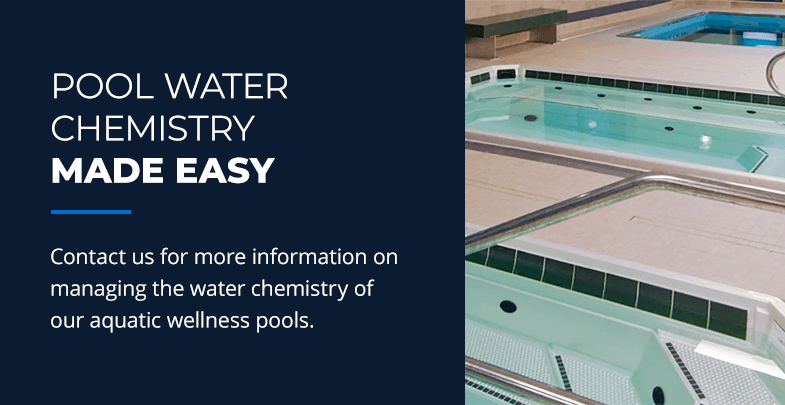Water Chemistry: How to Balance Pool Water
Aquatic wellness pools require special attention to maintain water chemistry. Since the primary purpose of a HydroWorx pool is health and wellness, keeping the water at a safe pH level is essential. At HydroWorx, we produce quality aquatic wellness pools for sports injuries and chronic conditions, and we’ll tell you all you need to know for safely balancing pool water.
PH Testing
pH level refers to a substance’s alkalinity or acidity and is measured on a scale from zero to 14, with zero being the highest acidity level and 14 being the lowest. Water typically has a neutral pH of seven. However, aquatic pool water should be a 7.2 to 7.6 on the pH scale.
When testing the pH of an aquatic wellness pool, aim to get to 7.4. It’s essential to have a pool testing kit on hand so you can test the pH levels every day. Aquatic wellness pools have an ever-changing pH due to the number of people who use them daily. Hair and skin products can cause the pH levels to fluctuate.
Alkalinity Testing
Alkalinity testing or total alkalinity refers to balancing the pool water and controlling the pH value. While it may sound similar to pH testing, the two practices differ in how they are measured. We measure alkalinity in parts per million (ppm) instead of using the pH scale. Perform a weekly alkalinity test to ensure your aquatic wellness pool’s alkalinity is between 80 and 120 ppm. Depending on the results from the alkalinity test, you may need to add a chemical to increase or decrease the alkalinity to get it within range.
Chlorine and Sanitation Testing
Once your pH and alkalinity levels are balanced, add chlorine shock to treat the pool water and ensure proper sanitation. The chlorine shock needs time to react and disinfect the water. Ensure no one enters the pool for the next 15-24 hours, as the high chlorine levels can lead to skin irritation. When the shock treatment is complete, there may be leftover chlorine that did not react, which you should remove to maintain the pH. You can use a bromine feeder as the final touch to keep the pool water clean and at the correct pH.

Pool Water Chemistry Made Easy
Here at HydroWorx, we take pride in educating our clients on how to operate our equipment for the best results. Contact us for more information on managing the water chemistry of our aquatic wellness pools.

